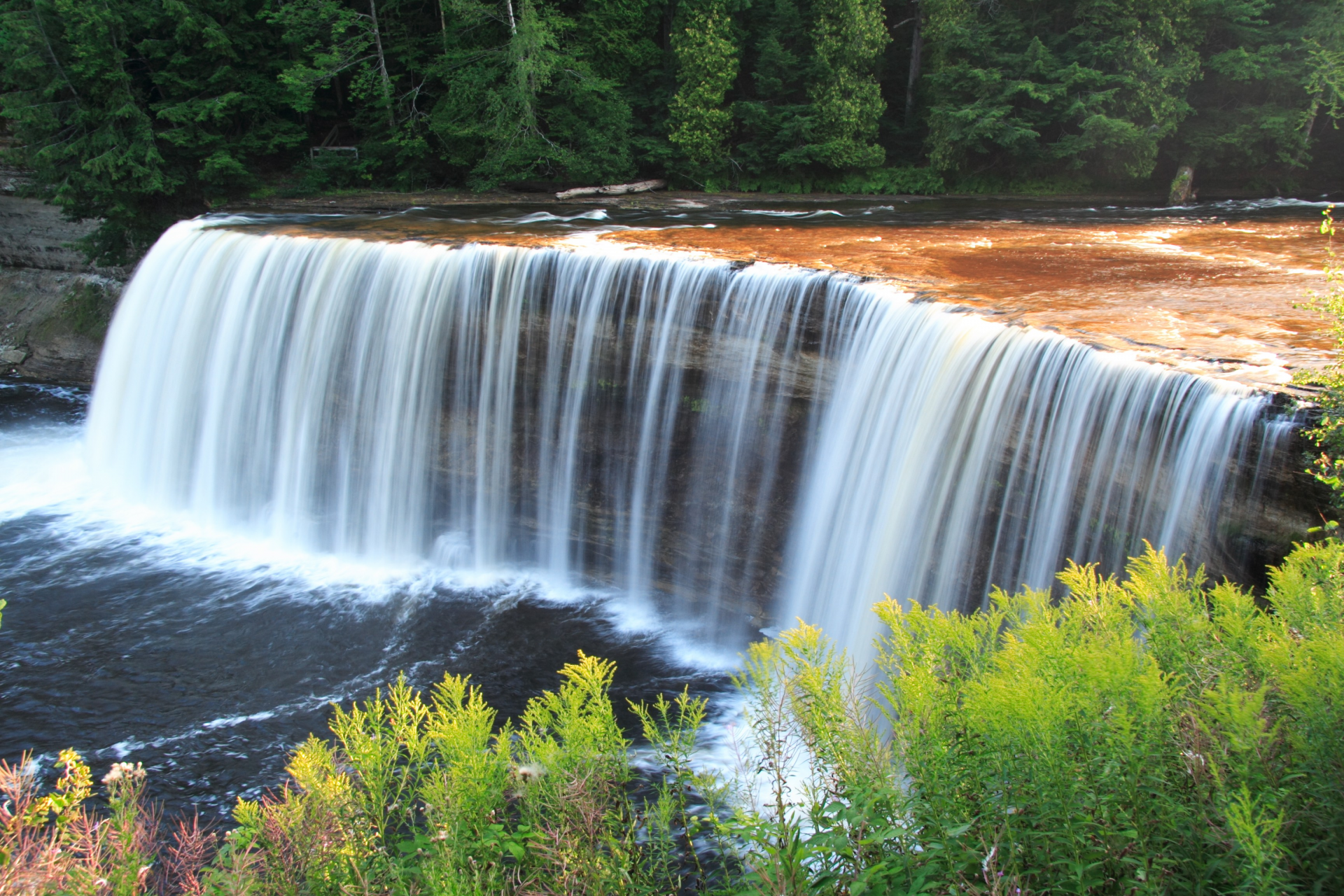Top 10 Most Beautiful Waterfalls in the US for Discovering
| Table of Contents |
The United States is home to thousands of waterfalls, each varying in size, type, and beauty. Many waterfalls in the US are located within national parks and forests, making them accessible via well-maintained trails and viewing platforms. Some, like Niagara Falls, are easily accessible and highly commercialized, while others, such as Havasu Falls, require more effort to reach, involving lengthy hikes or permits.
Waterfalls often vary in appearance and flow depending on the season. Spring and early summer are typically the best times to visit, as snowmelt and rainfall result in higher water volumes and more dramatic flows. Fall and winter can offer quieter, less crowded experiences, but some falls may be less impressive due to lower water levels.
The United States' vast array of waterfalls showcases the country's diverse natural beauty, from the thunderous power of Niagara Falls to the serene elegance of smaller, lesser-known cascades. Whether seeking adventure, tranquility, or breathtaking views, there's a waterfall in the US to suit every preference and style of exploration.
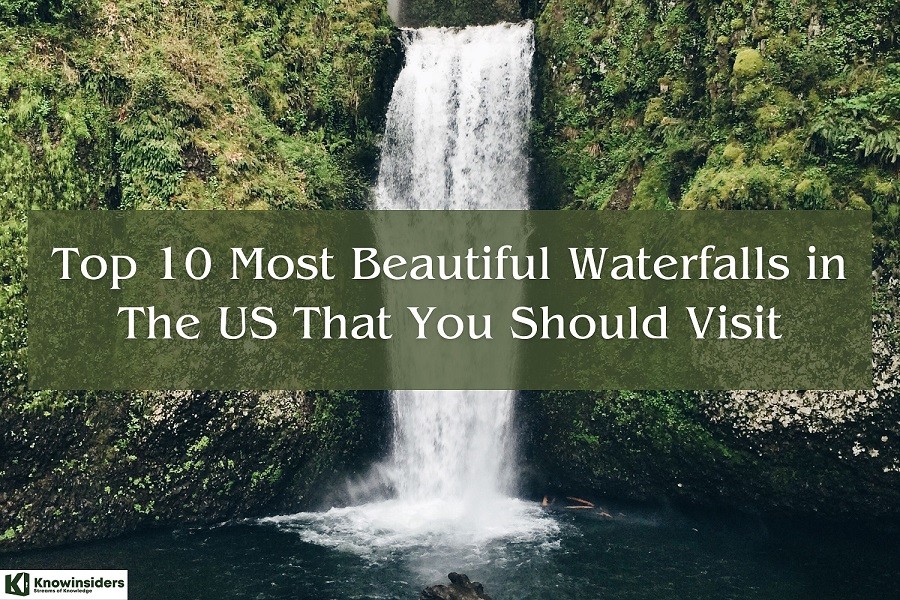 |
| Top 10 Most Beautiful Waterfalls in The US That You Should Visit |
Distribution and Features of Waterfalls in the US
Eastern US: Featuring iconic waterfalls such as Niagara Falls in New York and the numerous falls in the Appalachian Mountains, which are known for their accessibility and proximity.
Western US: Boasting some of the most awe-inspiring waterfalls in the world, these natural wonders can be found in renowned national parks like Yosemite, Yellowstone, and the Columbia River Gorge in the Pacific Northwest.
Southern US: Features unique waterfalls like Ruby Falls in Tennessee and the notable moonbow at Cumberland Falls in Kentucky.
Northern US:Includes a range of breathtaking waterfalls, such as the picturesque Tahquamenon Falls in Michigan and the awe-inspiring Shoshone Falls in Idaho.
Top 10 Most Beautiful Waterfalls in The US That You Should Visit
1. Niagara Falls
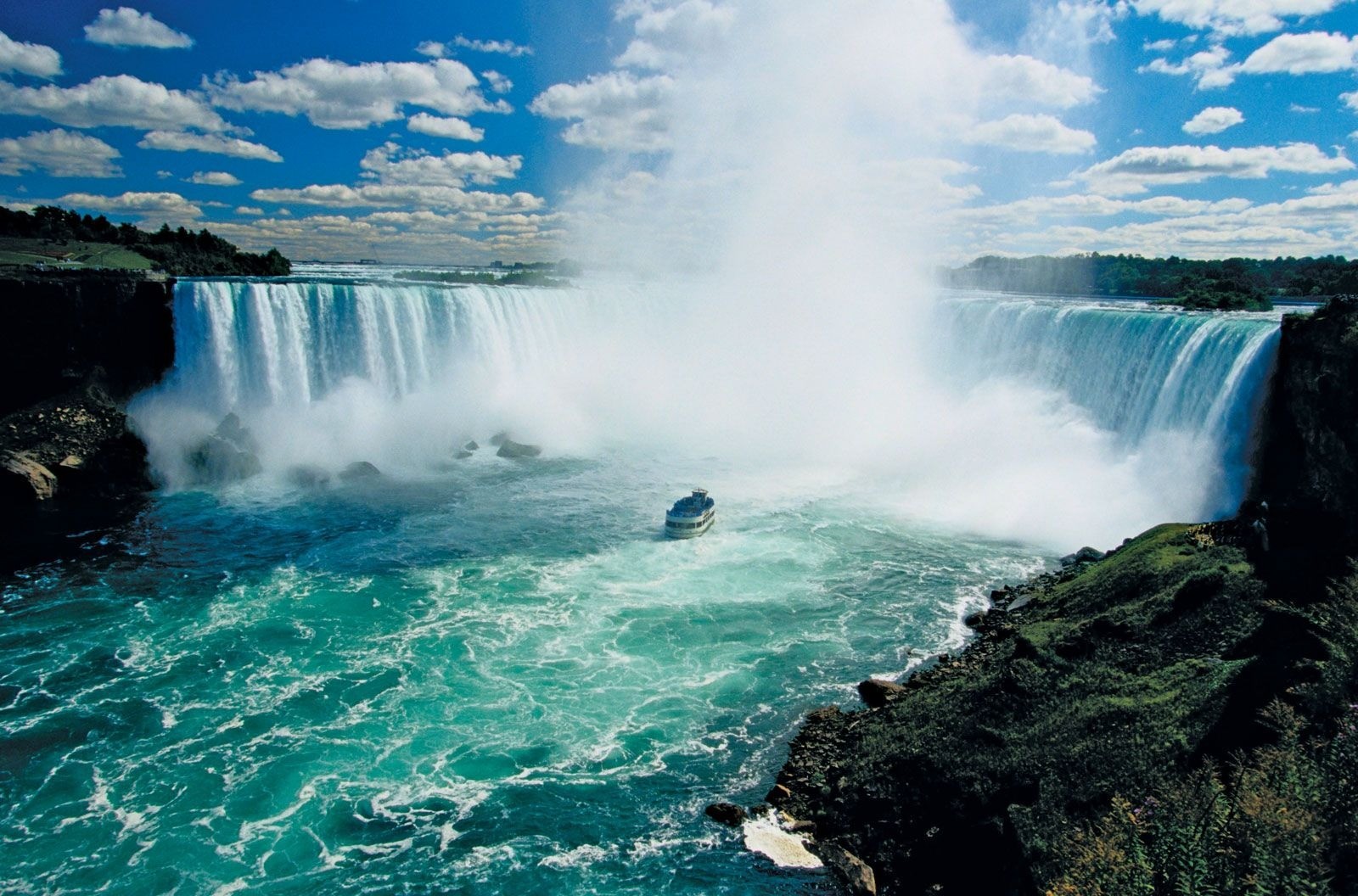 |
| Niagara Falls |
Location: Niagara Falls, straddling the border between New York, USA, and Ontario, Canada.
Height: 167 feet (American Falls), 181 feet (Horseshoe Falls)
Niagara Falls is one of the most famous natural attractions in North America, consisting of three distinct waterfalls: American Falls, Bridal Veil Falls, and Horseshoe Falls (the latter primarily on the Canadian side). Together, they form the highest flow rate of any waterfall in North America. The sheer volume of water, which can reach up to 225,000 cubic feet per second during peak flows, makes Niagara Falls a spectacular sight.
How to Visit:
If you're planning to drive, Niagara Falls State Park is conveniently situated just a short 30-minute ride away from Buffalo, New York. Plenty of parking is available in the park.
Traveling by train is a convenient option for reaching Niagara Falls. Amtrak provides service to Niagara Falls Station, which is conveniently located near the falls.
There are plenty of activities for visitors to enjoy in Niagara Falls. One popular option is taking a boat tour like the Maid of the Mist, which offers a thrilling experience as you get up close to the base of the falls. Additionally, there are several observation points within Niagara Falls State Park that provide stunning views of the falls. In addition to its scenic beauty, the park provides a variety of walking trails, captivating historical exhibits, and a well-equipped visitor center.
2. Yosemite Falls
 |
| Yosemite Falls |
Location: Yosemite National Park, California.
Height: 2,425 feet (Upper Yosemite Fall: 1,430 feet; Middle Cascades: 675 feet; Lower Yosemite Fall: 320 feet)
Yosemite Falls is the highest waterfall in North America and one of the tallest in the world. It consists of three sections: Upper Yosemite Fall, the Middle Cascades, and Lower Yosemite Fall. The falls are fed by melting snow, so their flow is at its peak in the spring, usually diminishing by late summer.
How to Visit:
Driving to Yosemite National Park from San Francisco takes approximately 4 hours, while the journey from Los Angeles takes around 6 hours. There is parking available within the park, although it may be limited during peak seasons.
Traveling by Public Transit: YARTS (Yosemite Area Regional Transportation System) offers convenient bus service to the park from different locations in the surrounding area.
One of the most convenient ways to experience the beauty of Yosemite Falls is by taking a quick and easily accessible trail that leads to the base of Lower Yosemite Fall. If you're up for a more exhilarating adventure, the Yosemite Falls Trail is perfect. It provides a demanding, full-day hiking experience that takes you to the summit of the falls, rewarding you with breathtaking panoramic views.
3. Multnomah Falls
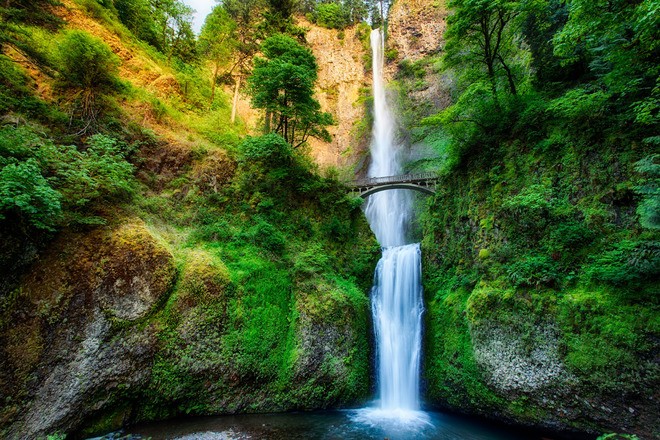 |
| Multnomah Falls |
Location: Columbia River Gorge, Oregon, approximately 30 miles east of Portland.
Height: 620 feet (upper fall: 542 feet; lower fall: 69 feet)
Multnomah Falls is Oregon’s tallest waterfall and one of the most visited natural attractions in the Pacific Northwest. It is a two-tiered waterfall with the upper falls significantly taller than the lower falls. The falls are fed by underground springs from Larch Mountain, with peak flow in the winter and spring.
How to Visit:
To reach Multnomah Falls, you can take the Historic Columbia River Highway (US Route 30) by car. Parking at the falls can be quite limited, especially on weekends, so it's best to arrive early to secure a spot.
For those looking to explore the beautiful Columbia Gorge, there is a convenient option for public transit. The Columbia Gorge Express offers seasonal bus service from Portland to Multnomah Falls. It's a great way to enjoy the stunning scenery without the hassle of driving.
There is a paved trail that takes you from the base to Benson Bridge, providing a closer view of the upper falls. For those looking for a thrilling experience, a 1.1-mile trail (one way) extends from the bridge to the top of the falls, providing breathtaking views of the Columbia River Gorge throughout the journey. In addition to the visitor center, there is also the iconic Multnomah Falls Lodge, where you can enjoy a delicious meal and browse through a variety of unique gifts.
4. Havasu Falls
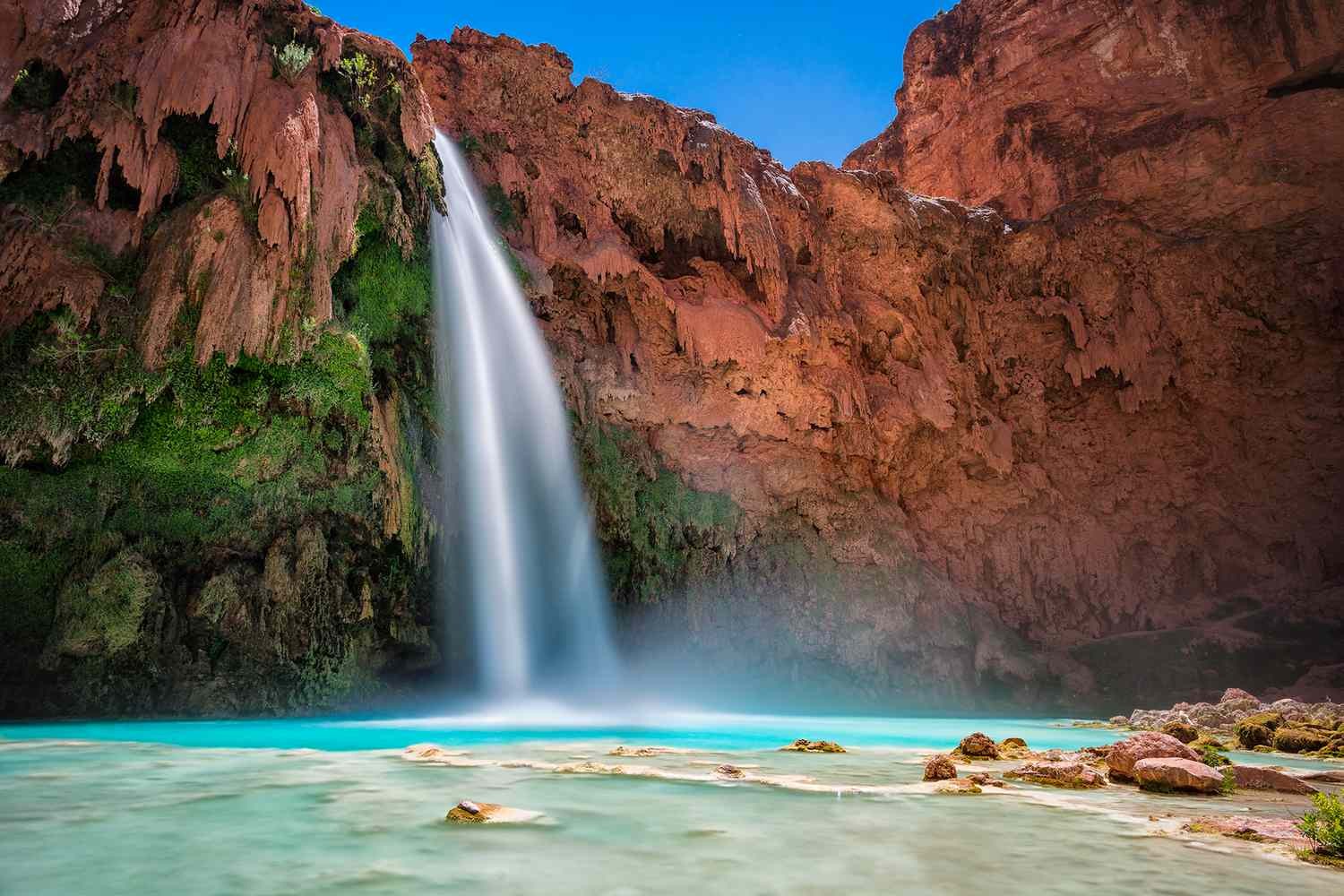 |
| Havasu Falls |
Location: Havasupai Indian Reservation, Grand Canyon, Arizona.
Height: Approximately 100 feet.
Havasu Falls is renowned for its stunning blue-green waters, which are a result of high concentrations of calcium carbonate. The falls cascade into a series of natural pools, making it a popular destination for swimming and photography. The unique beauty of Havasu Falls makes it a bucket-list destination for many travelers.
How to Visit:
By Car: From Flagstaff, Arizona, it takes approximately 4 hours to reach the Havasu Falls trailhead at Hualapai Hilltop.
On Foot: To get to the falls, hikers must cover about 10 miles starting from Hualapai Hilltop. It is necessary to obtain permits from the Havasupai Tribe in advance.
By Helicopter: Hualapai Hilltop offers helicopter rides to the village of Supai, from where it's a 2-mile hike to the falls.
Activities: Guests can go hiking to neighboring waterfalls like Mooney Falls and Beaver Falls, swim in the pools, and camp in approved areas. Keep in mind that due to high demand, reservations for camping are necessary and can be difficult to come by.
5. Ruby Falls
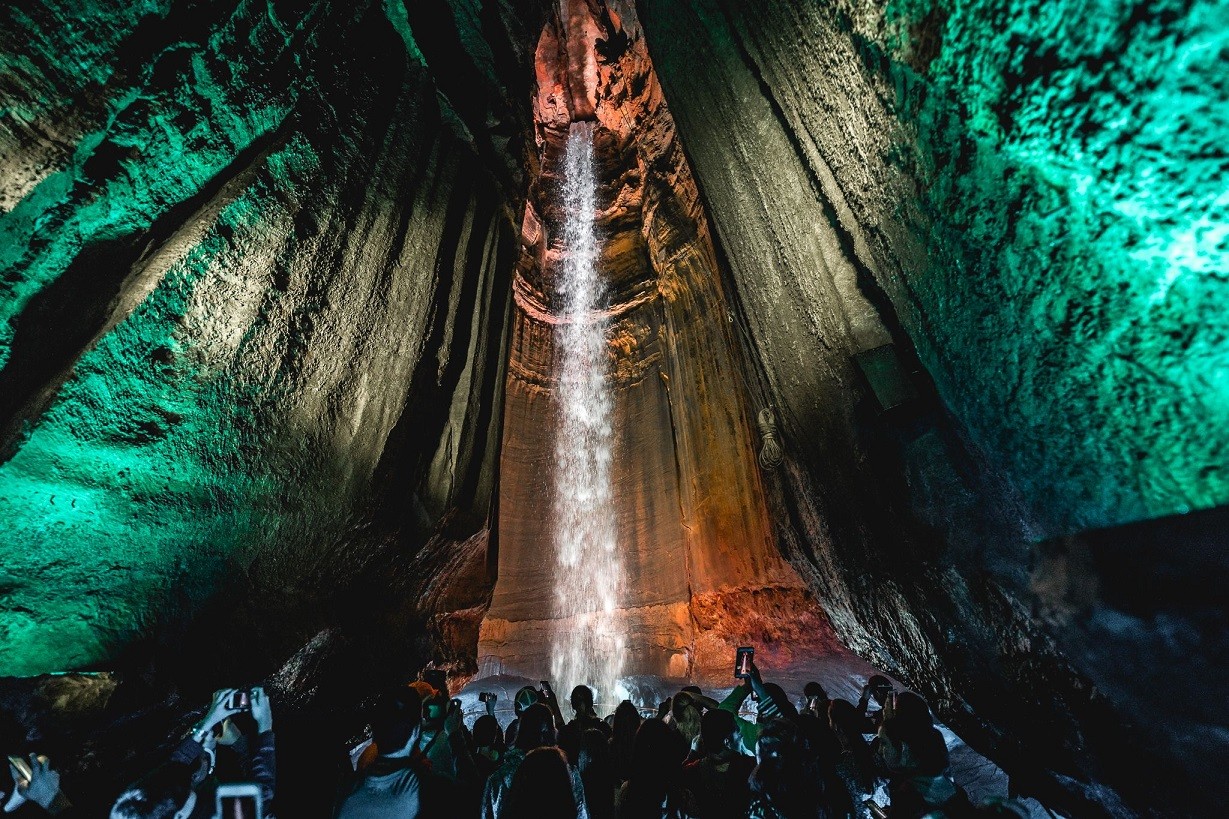 |
| Ruby Falls |
Location: Lookout Mountain, Chattanooga, Tennessee.
Height: 145 feet.
Ruby Falls is the tallest and deepest underground waterfall open to the public in the United States. Discovered in 1928, it is located within Ruby Falls Cave and is illuminated with a colorful light show, creating a mesmerizing experience for visitors.
How to Visit:
By Car: Ruby Falls is only a short drive from Chattanooga's downtown, making it easily accessible. The attraction has plenty of parking available.
By Public Transportation: Although there are public transportation options in Chattanooga, driving is the most practical way to get there.
Activities: There are guided tours that take guests to the waterfall via the cave. The tour covers the geological formations within the cave as well as Ruby Falls' past. Additionally, there is an observation tower with sweeping views of the Tennessee Valley and a zip line.
Read More: Top 9 Most Impressive Waterfalls In Canada
6. Bridalveil Fall
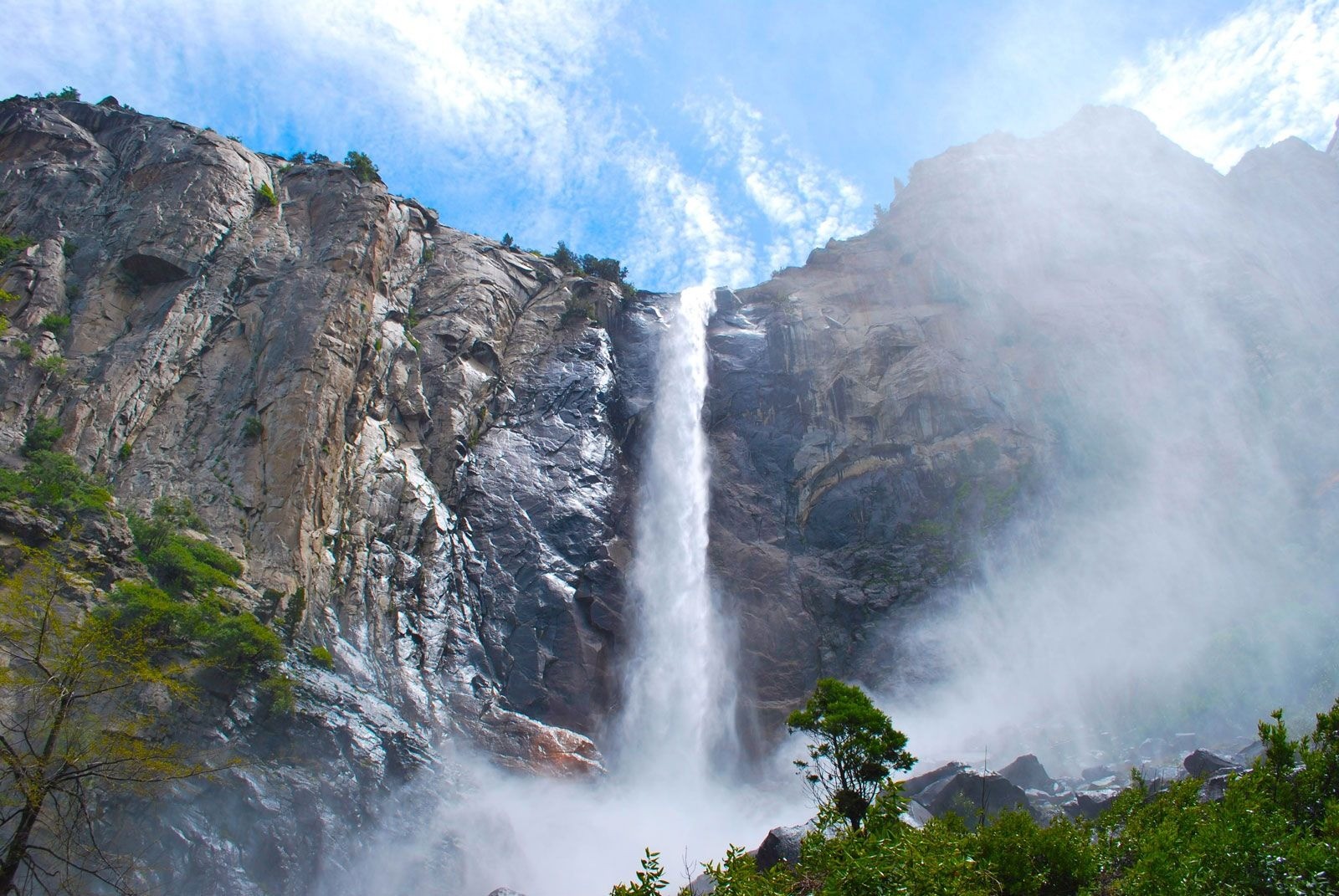 |
| Bridalveil Fall |
Location: Yosemite National Park, California.
Height: 620 feet.
Bridalveil Fall is one of the most iconic waterfalls in Yosemite National Park. It is known for its ethereal beauty, particularly when the wind blows, causing the water to fan out and creating a veil-like appearance. The fall flows year-round, though it is most impressive in the spring.
How to Visit:
Via Car: The Yosemite Valley Loop Road makes it simple to reach Bridalveil Fall. There are parking lots close by, although they tend to fill up fast during the busiest times of year.
By Shuttle: Bridalveil Fall and other park highlights are served by Yosemite's complimentary shuttle service.
Activities: From the parking lot, a short, paved trail goes to the base of the falls, offering a great vantage point. More daring tourists can see Bridalveil Fall from a variety of vantage points on a few of Yosemite's hiking trails.
7. Shoshone Falls
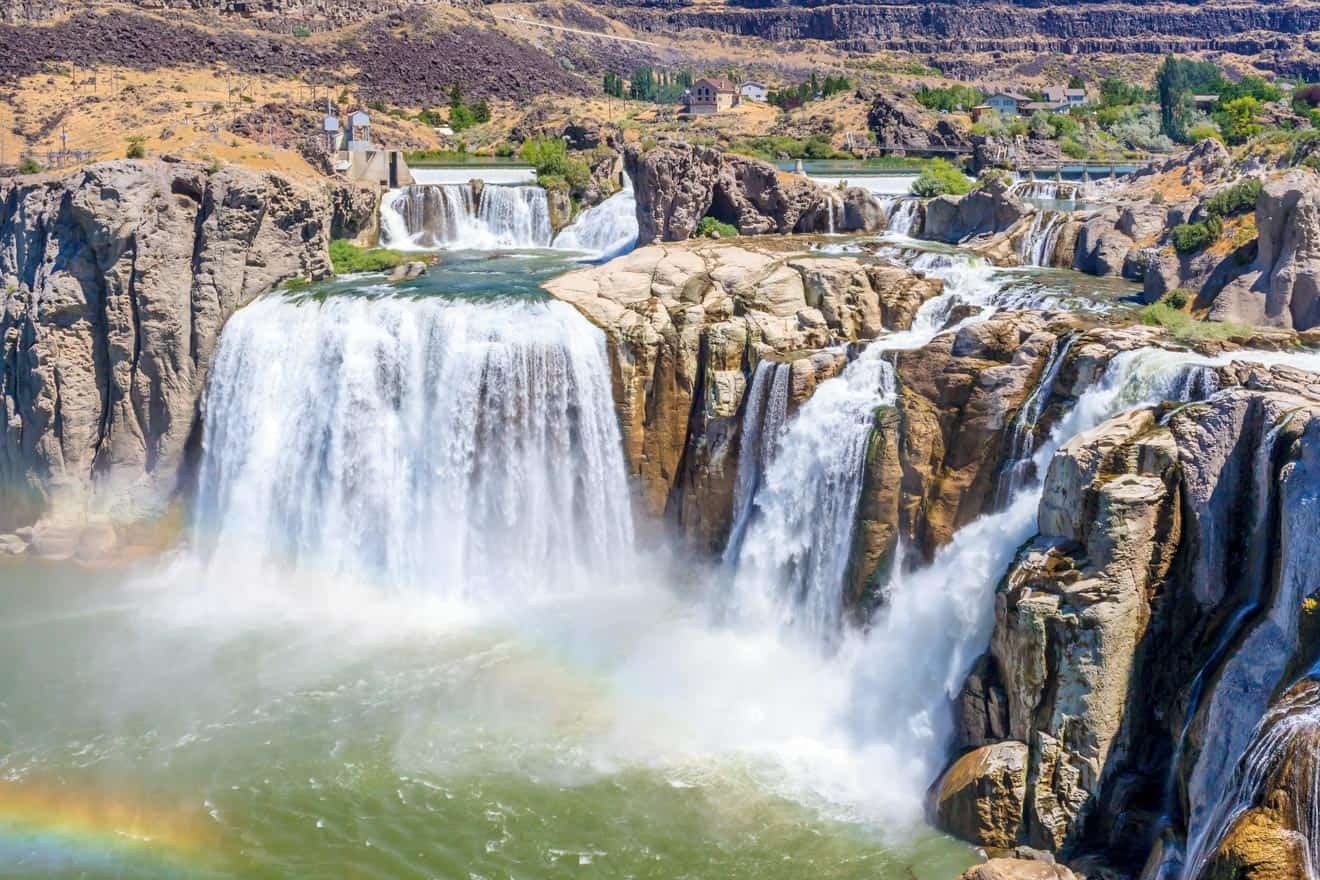 |
| Shoshone Falls |
Location: Twin Falls, Idaho.
Height: 212 feet.
Shoshone Falls, often referred to as the "Niagara of the West," is higher than Niagara Falls and offers a spectacular sight, especially during the spring when the Snake River's flow is at its peak. The falls span a width of over 900 feet, creating a broad curtain of water.
How to Visit:
By Car: Twin Falls, the city's neighbor, is only a short drive away from Shoshone Falls. There's a park with lots of parking, decks for picnics, and observation areas.
By Air: Regional flights and car rentals are available from Magic Valley Regional Airport in Twin Falls, which is the closest airport.
Activities: Shoshone Falls Park offers a variety of vantage points from which visitors can see the falls. In addition, there are picnic spaces, walking trails, and a boat ramp in the park. The falls are enjoyable all year round, but spring is the ideal time to visit when the water flow is at its peak.
8. Cumberland Falls
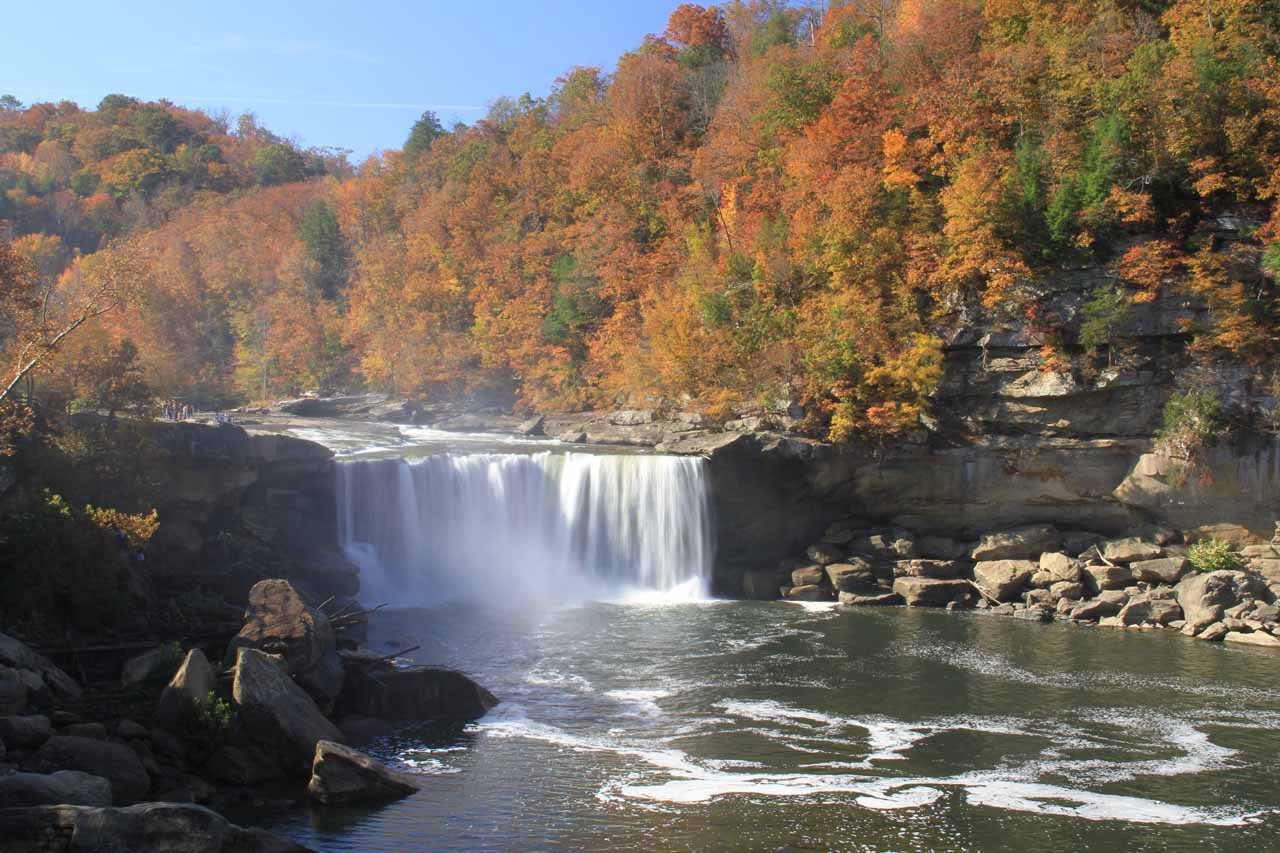 |
| Cumberland Falls |
Location: Cumberland Falls State Resort Park, near Corbin, Kentucky.
Height: 68 feet.
Cumberland Falls, often called the "Niagara of the South," is renowned for its impressive width of 125 feet and for producing a "moonbow" on clear nights during a full moon. This natural phenomenon is rare and attracts visitors from around the world.
How to Visit:
By Car: Cumberland Falls State Resort Park is reachable by car; it is situated 1.5 hours north of Knoxville, Tennessee, and roughly 2 hours south of Lexington, Kentucky. The park has plenty of parking spaces available.
Activities: There are several places to see the falls in the park, as well as horseback riding, hiking trails, and guided tours. Clear nights under a full moon are ideal for viewing the moonbow. The park also features a restaurant, a lodge with lodging, and picnic areas.
9. Lower Falls of the Yellowstone River
 |
| Lower Falls of the Yellowstone River |
Location: Yellowstone National Park, Wyoming.
Height: 308 feet.
The Lower Falls of the Yellowstone River is the park's most famous and dramatic waterfall, located in the Grand Canyon of the Yellowstone. It is nearly twice the height of Niagara Falls and offers spectacular views, especially from various lookout points along the canyon rim.
How to Visit:
By Car: Yellowstone National Park's Grand Loop Road leads to the falls. Several viewpoints, such as Artist Point, Lookout Point, and Uncle Tom's Trail, have parking areas.
By Public Transit: Driving is the most practical option because there is no public transportation available within the park.
Activities: There are a number of paths and vantage points where guests can see the falls. From the top of the falls, the Brink of the Lower Falls Trail offers a close-up view, and Artist Point offers a broad perspective of the falls and canyon. In addition, the park offers guided tours, hiking, and animal viewing.
10. Tahquamenon Falls
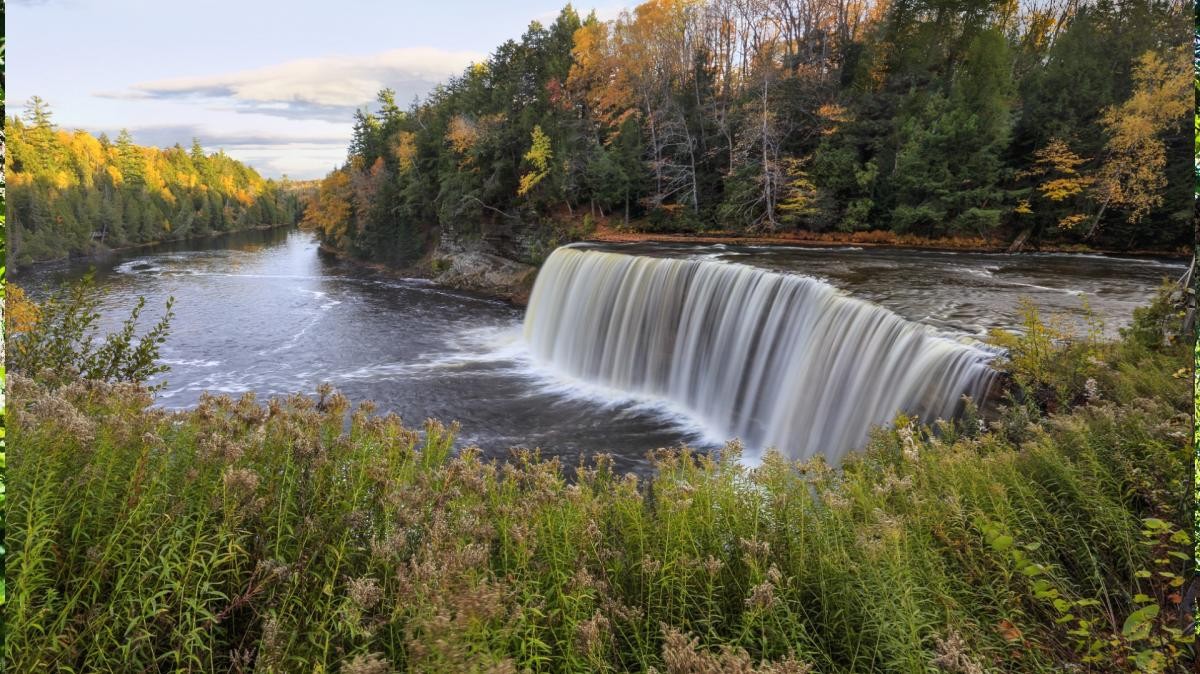 |
| Tahquamenon Falls |
Location: Tahquamenon Falls State Park, Upper Peninsula, Michigan.
Height: Upper Falls: 50 feet; Lower Falls: Series of five smaller falls around an island.
Tahquamenon Falls consists of two main falls: the Upper Falls, which is one of the largest waterfalls east of the Mississippi River, and the Lower Falls, a series of smaller cascades surrounding an island. The tannin-rich water, which gives the falls a unique brownish color, originates from the cedar swamps draining into the river.
How to Visit:
Driving to the park is quite convenient, with a travel time of approximately one hour from Sault Ste. Marie and 1.5 hours from Mackinaw City, Michigan. There are designated parking areas for the Upper and Lower Falls.
Visitors have the opportunity to explore a short and easily accessible trail that offers multiple vantage points to view the Upper Falls. Visitors have the option to reach the Lower Falls either by taking a leisurely hike or by renting a rowboat. Additionally, the park provides opportunities for camping, hiking trails, and picnic areas. During the winter season, many people enjoy engaging in snowshoeing and cross-country skiing.
Types of WaterfallsPlunge Waterfalls: Water drops vertically, losing contact with the bedrock surface. Example: Yosemite Falls, California. Horsetail Waterfalls: Water maintains some contact with the rock face. Example: Multnomah Falls, Oregon. Cataract Waterfalls: Large, powerful waterfalls with heavy flow, often creating mist. Example: Niagara Falls, New York. Tiered Waterfalls: Waterfalls in a series of distinct steps or cascades. Example: Lower Falls of the Yellowstone River, Wyoming. Punchbowl Waterfalls: Water descends in a constricted form and then spreads out into a pool. Example: Punchbowl Falls, Oregon. Fan Waterfalls: Water spreads horizontally as it descends, resembling a fan shape. Example: Bridalveil Fall, California. |
Conclusion
Each of these waterfalls offers unique experiences and breathtaking natural beauty, making them must-visit destinations for travelers and nature enthusiasts. These waterfalls not only highlight the diverse landscapes across the US but also offer unique experiences and breathtaking beauty, making them must-visit destinations for nature enthusiasts and travelers alike.
 Top 11 Most Beautiful Female Journalists In India Today Top 11 Most Beautiful Female Journalists In India Today The media and journalism industries are now very popular places to work. The entire country is not only fixated on television to get their daily ... |
 Top 15 Hottest and Most Beautiful Women in Romania Today Top 15 Hottest and Most Beautiful Women in Romania Today Romania continues to honor and admire the allure and charm of its women, who not only possess captivating looks but also hold significant influence in ... |
 Top 10 Hottest and Most Beautiful Women in France Today Top 10 Hottest and Most Beautiful Women in France Today In France, known for its culture, art, and history, many women are beautiful and contribute to their fields and society. This article discusses 10 remarkable ... |
 Top 10 Most Famous and Beautiful Bridges in the US Top 10 Most Famous and Beautiful Bridges in the US Bridges are symbols of innovation and beauty in American architecture and engineering, which is constantly changing. Tourists and design enthusiasts from around the world visit ... |

